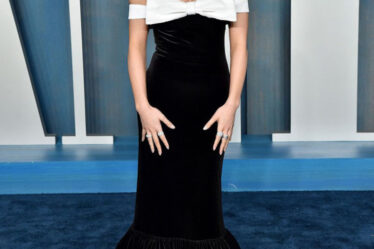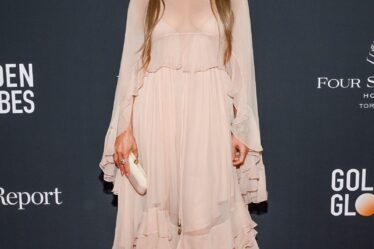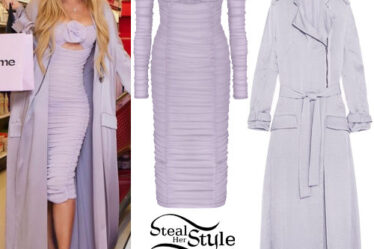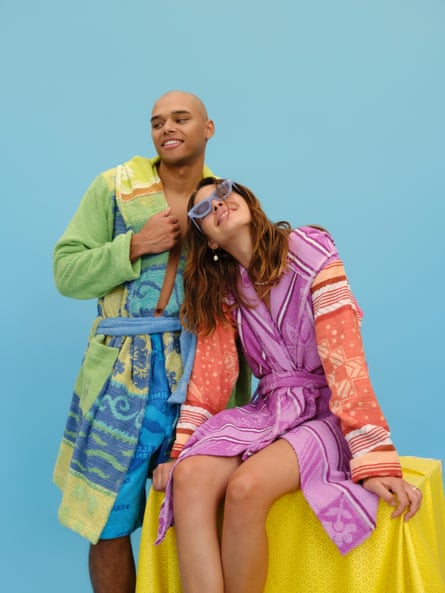
Since it’s been a minute between truly relaxing summers – the kind with golden sunsets, morning swims and no need to check the news hourly – it makes perfect sense that the fabric of the season is terry towelling. Soft, absorbent and chic, it can be worn over slightly damp swimwear while eating enormous bowls of spaghetti vongole.
Terry towelling, or terry cloth, emerged as a trend during the European summer of 2021 and has been gathering momentum since. It dominated the spring/summer 2023 runway season and, unsurprisingly, has captured the imagination of Australian designers.
Mostly it is made of 100% cotton. It is plush, loopy and comes in bright pops of colour. Lucy Folk, an icon of design à la plage, has been making robes, shorts and dresses from terry cloth since 2016. She describes it as intrinsically Australian: “We have grown up at the beach and a towel is a fashion statement.”
Her robes come in a range of retro-inspired colours including mustard, chocolate brown and dusky pink. A geometric pattern is woven into the piles of each one. She created them out of a desire for “the ultimate beach cover-up” that works to “arrive to a dinner in”, even though it might be unexpected.
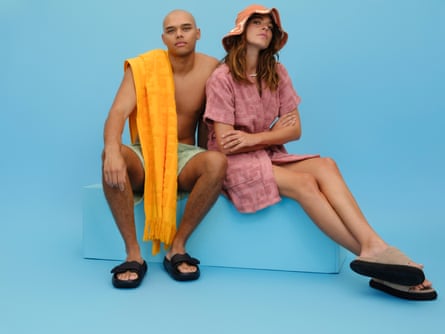
The styles are nostalgic. A throwback to the 1970s when terry towelling fever took off and the New York Times announced it was coming “out of the bathroom and stepping into the office, the boardroom and the dinner party”.
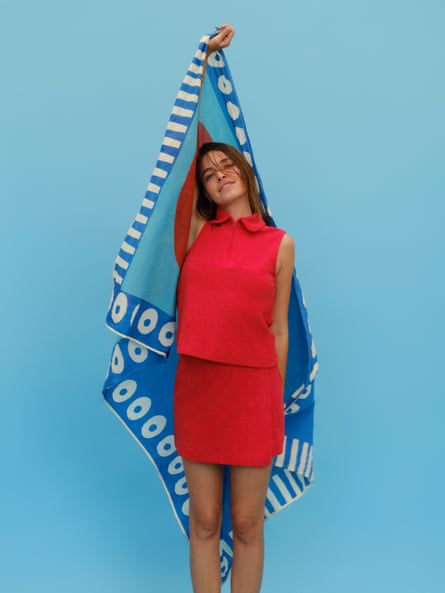
In 2022, the trend is similarly wide-ranging. At the highest end of the ready-to-wear market, Prada is selling terry-towelling shorts, hoodies and robes, Bottega Veneta has made terry-cloth accessories while Zegna surprised the fashion set by sending suits made of stiffened terry down the runway during Milan men’s fashion week.
The most recent winner of the Woolmark prize, Saul Nash has worked the fabric into his next movement-inspired collection, Siblings. Closer to home, Zimmerman has launched poolside cover-ups. At the more accessible end of the price range, Terry, Spell and Venroy are also selling terry-towelling garments.
The designer and founder of Melbourne-based label Baaby, Amelia Mercoulia, describes her terry-towelling styles as “born from a love of summer, friends, family and endless beach days”. Her line features simple, tennis-inspired dresses and skirts, with piqued collars and zip-up fronts. To keep her designs sustainable, she tried hard to find towelling without polyester.
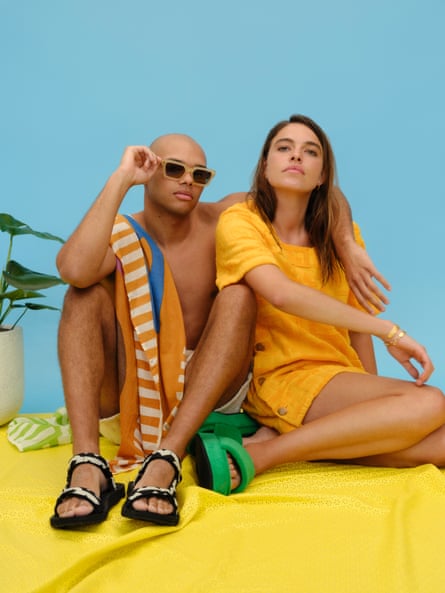
-
Stylist Emma Read says terry towelling’s texture means even bold colours deliver ‘a beautiful washed-out effect’. This means you can wear brighter shades and mix and match eclectic tones, which ‘plays into the fabric’s innately 70s feel’.
Tarquin wears Lucy Folk shorts, sarong and sunglasses and Teva sandals. Scarlett wears Lucy Folk dress, gold cuff and bracelet; Reliquia hoop earrings and Alias Mae slides. Photograph: Michael Brunt/The Guardian
Terry cloth dates as far back as the 1800s but was reimagined in the 1940s when fabric shortages during the war saw women turning their sheets, curtains and towels into dresses. This early upcycling is having something of a renaissance as the fashion industry looks for creative ways to reduce its impact.
French designer Marine Serre turned black towels into bomber jackets in 2020. In the years since she has continued to reimagine household textiles as clothing, from tea towels to bedsheets. Her SS23 collection features hot pink terry-cloth pants, dresses, jumpsuits, Chanel-esque blazers, crop tops and menswear.
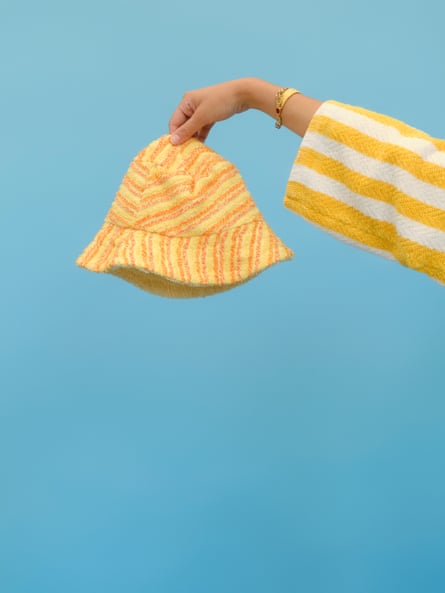
Turning waste into desirable products offers the fashion industry a sustainable solution with few downsides. It is something that has been embraced by independent designers in the United States who source technicolour vintage towels from luxury brands such as Yves Saint Laurent, Emilio Pucci and Ralph Lauren and turn them into loungewear and easy summer staples.
In Australia, Georgie Vicars, the designer behind Jamoo, is a champion of the towel upcycling movement. She sources vintage towels from remote and strange places and converts them into jumpers, shorts and bucket hats. The results are locally made, one-of-a-kind pieces in the vibrant hues of the past.
She describes working with vintage towels as “an endless trove of colour and pattern that speaks to another world I wasn’t alive for”. The sourcing can be a slow process, but it has connected her with some fascinating people. She once met a woman in Newcastle who had inherited a collection of towels from her mother. They were destined for use in a boutique hotel in the 1970s, but it never opened. “There were so many towels in brand new condition, some even had the original cellophane wrapping,” Vicars says.
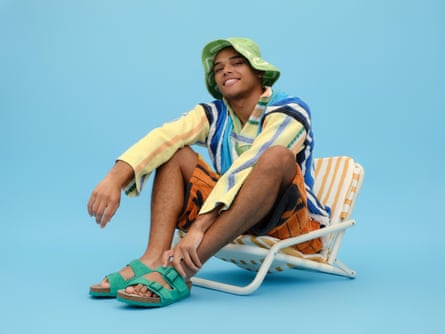
Vicars also works with people who have towels they love so much, they want to convert them into something they can wear. She calls this process “instilling true value in a garment” and says it’s at the core of living sustainably. An intimate connection with towelling adds to the joy. The feeling of being wrapped in a towel after a hot shower or a cold swim is one of life’s simplest pleasures.
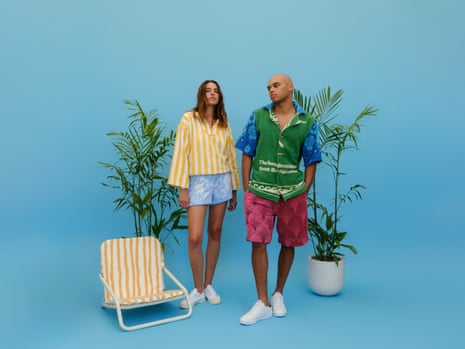
For Lucy Folk the benefits of garments made from towelling are many: “It’s fun, it’s versatile … it’s functional but chic. Why not create garments out of it?”
Most importantly, it allows for spontaneity: a necessity for a summer of easy swims, good books and long car rides. As long as you have your robe, it won’t matter if you forget your towel. And this summer, nothing should get in the way of a swim.

